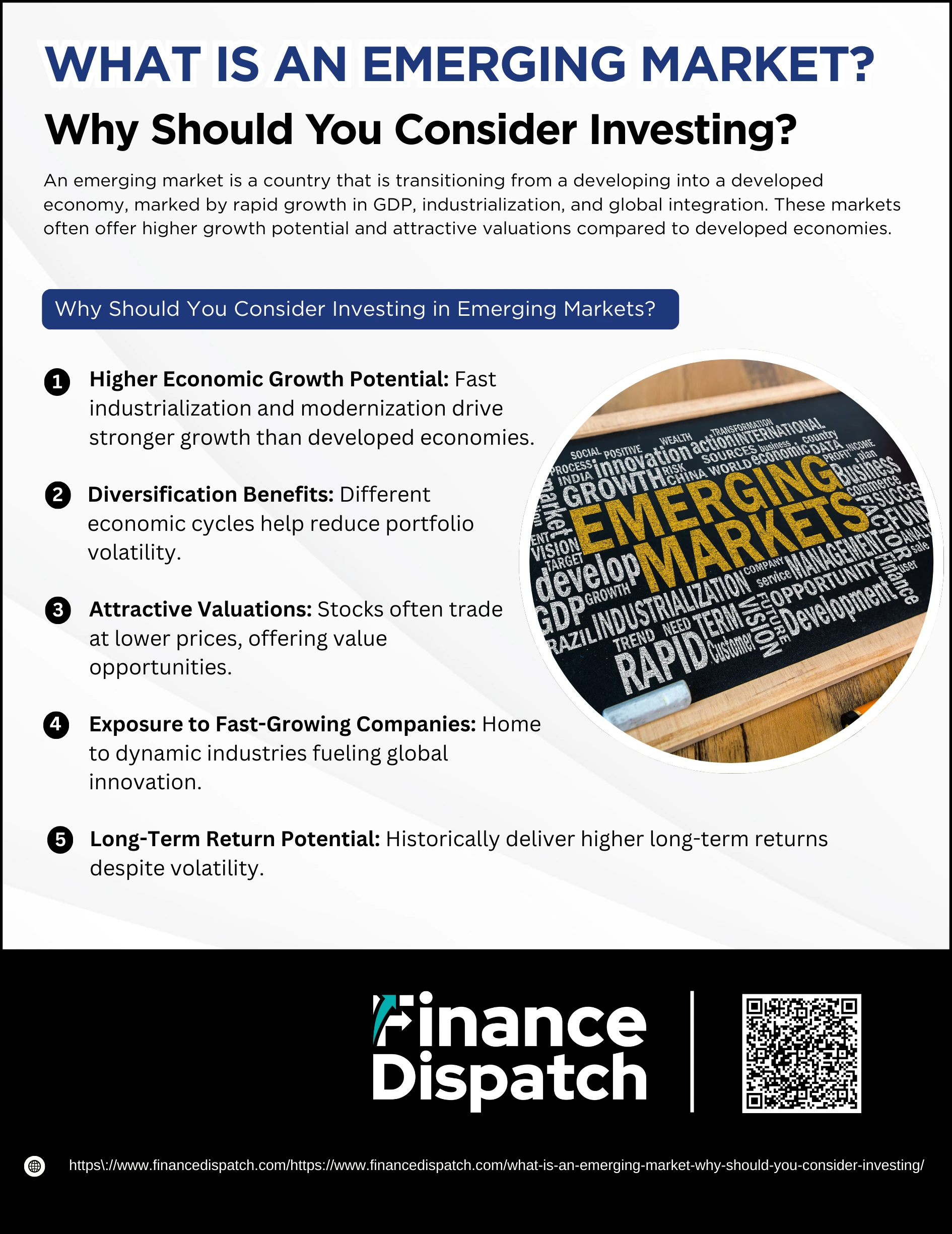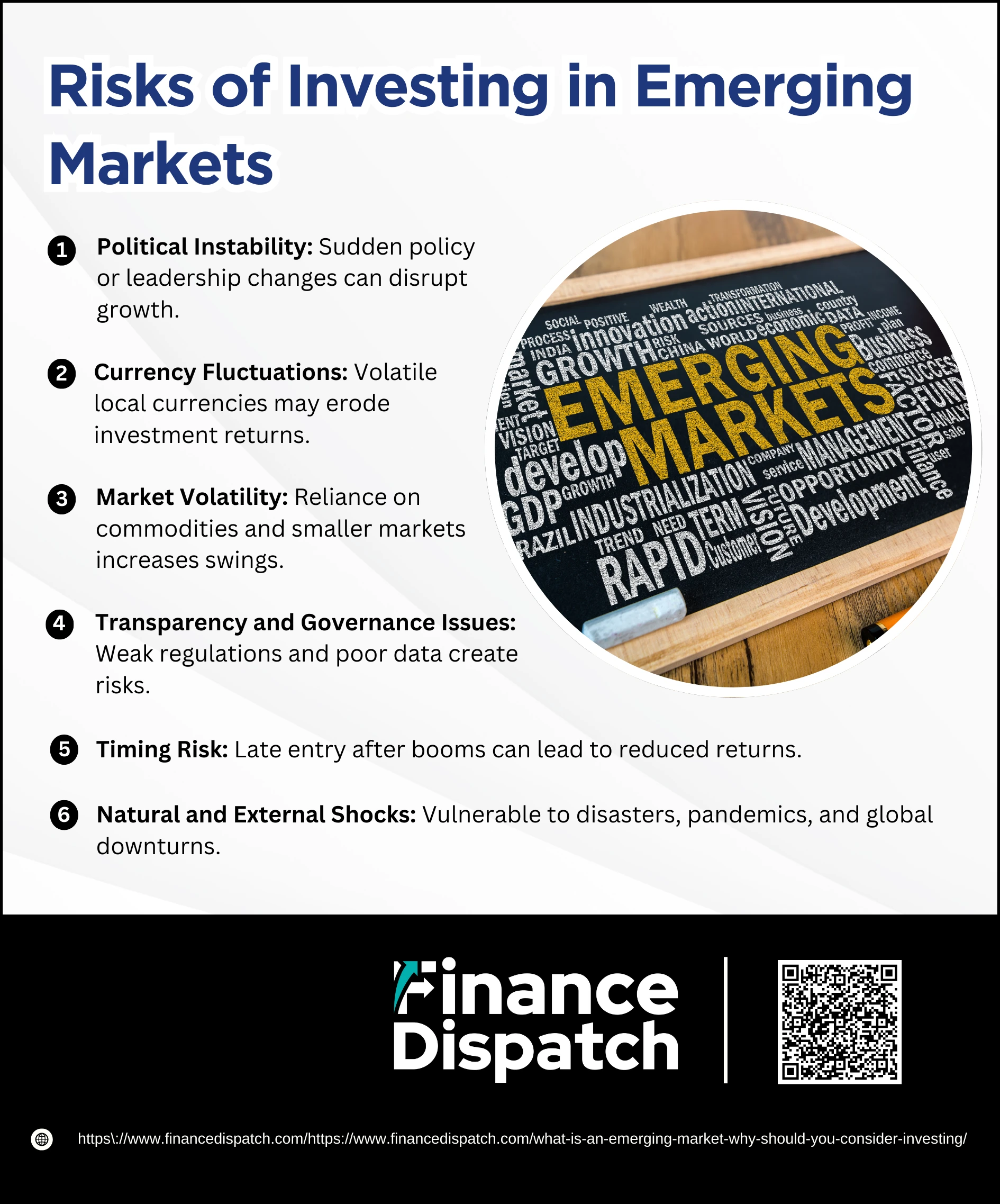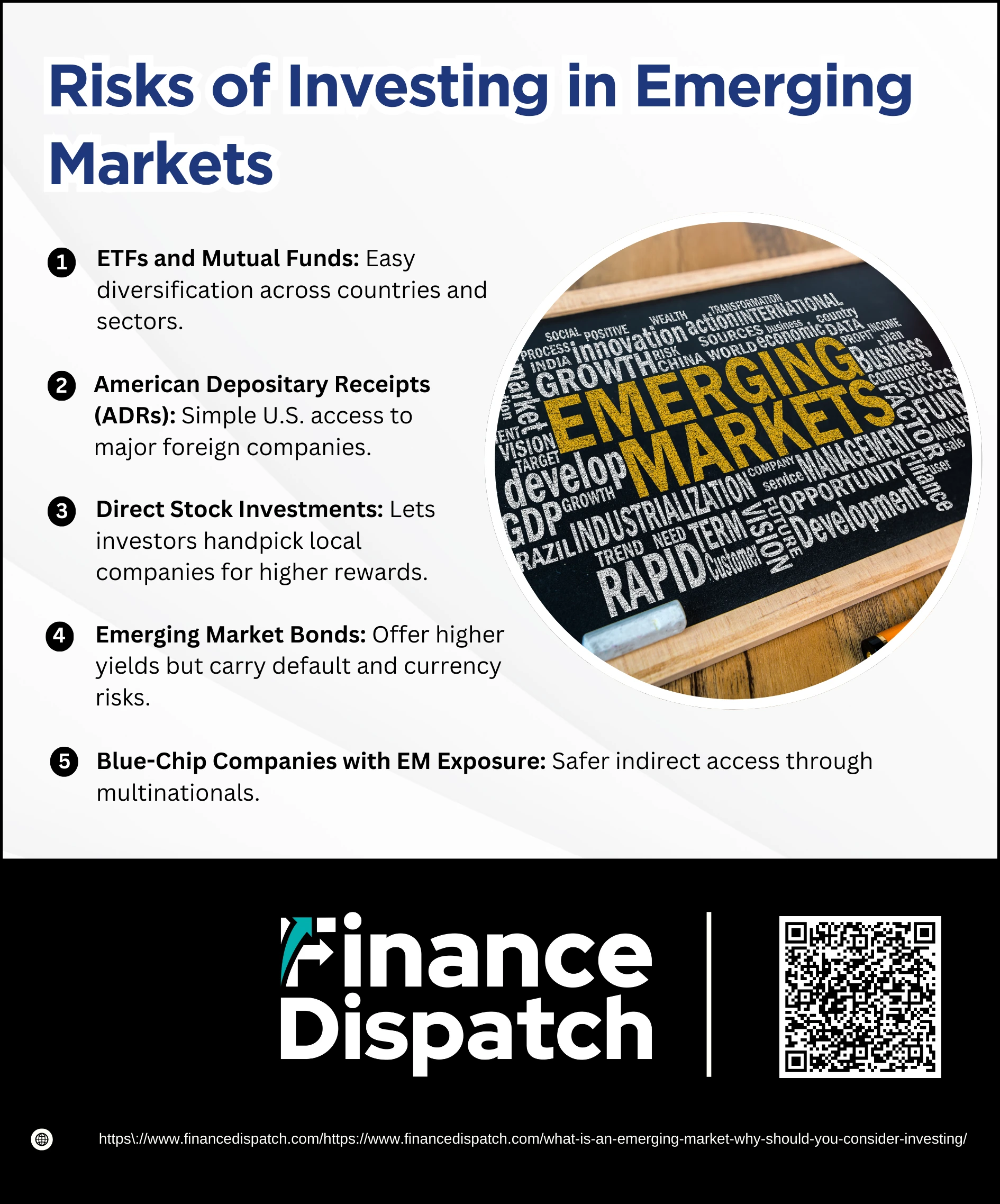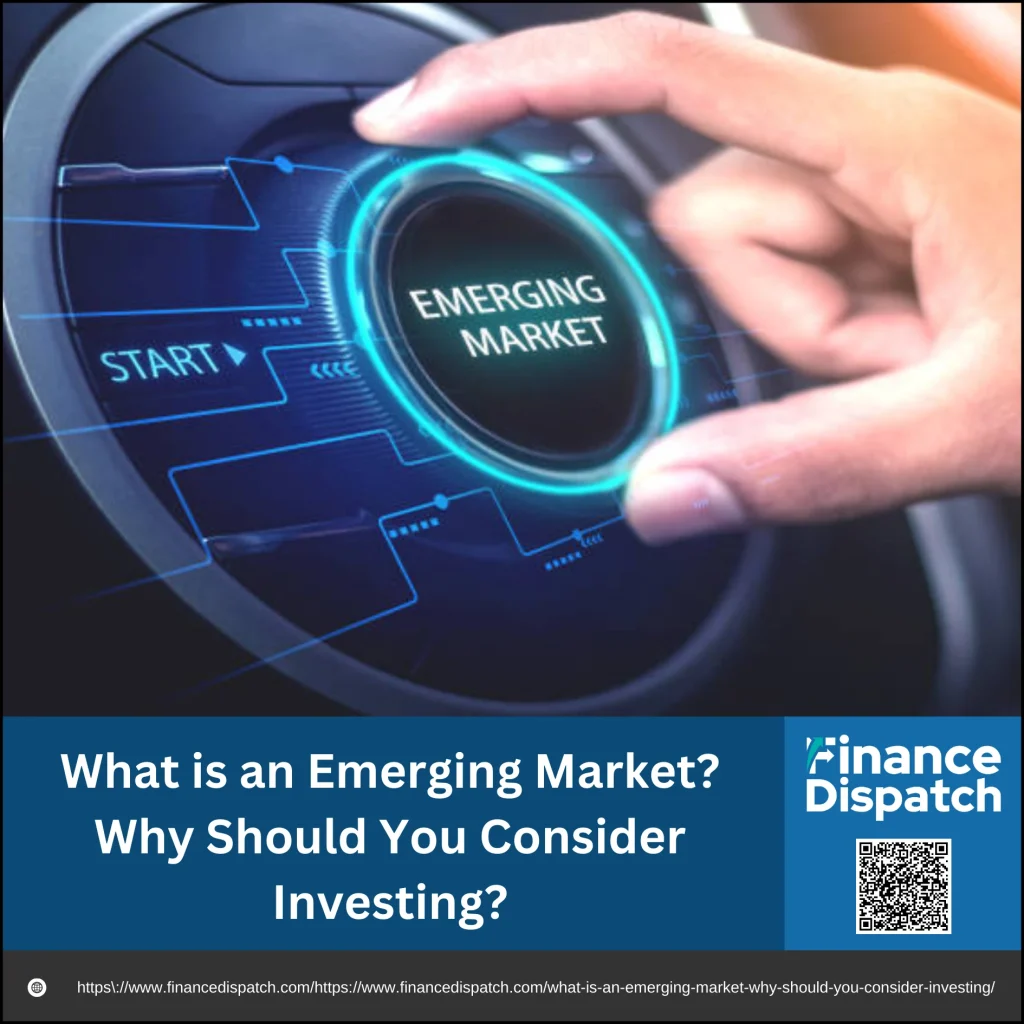When you hear the term emerging market, you might picture fast-growing countries that are not quite developed but no longer considered developing. These markets sit in the middle ground, offering some of the world’s most exciting investment opportunities—along with unique risks. From India’s booming technology sector to Mexico’s expanding manufacturing base, emerging economies are reshaping global trade and growth. For investors, they represent a chance to tap into higher returns, diversify portfolios, and gain exposure to industries that could define the future. But before diving in, it’s important to understand what emerging markets are, why they matter, and whether they fit into your investment strategy.
What is an Emerging Market?
An emerging market is an economy that sits between the developing and developed stages, experiencing rapid growth and industrialization but not yet as stable or wealthy as advanced nations. These markets often feature expanding industries, improving infrastructure, and rising living standards, driven by young populations and increasing global trade. At the same time, they tend to be more volatile, with currencies, politics, and regulations that can shift quickly. In simple terms, emerging markets are countries in transition—economies that are building modern systems while offering investors both exciting opportunities and higher risks compared to developed markets.
Examples of Emerging Markets
Emerging markets are spread across different regions, from Asia and Latin America to Africa and Eastern Europe. Each country has its own strengths—some are driven by manufacturing, others by technology or natural resources—but they all share the common trait of fast growth with higher-than-average risks. Below is a snapshot of some well-known emerging markets and what drives their economies today.
| Country | Key Growth Driver | Current Status (2025) |
| India | Technology, services, digital payments | Strong EM with consistent growth |
| Mexico | Manufacturing, trade, energy exports | Expanding EM with U.S. trade links |
| Taiwan | Semiconductors, AI innovation | High-potential EM, global tech hub |
| Brazil | Agriculture, commodities, energy | Volatile but resource-rich EM |
| South Africa | Mining, industrialization | Key African EM, faces structural challenges |
 Why Should You Consider Investing in Emerging Markets?
Why Should You Consider Investing in Emerging Markets?
Emerging markets appeal to investors because they combine rapid growth with diversification benefits that aren’t always available in developed economies. While they carry higher risk, they can also provide a valuable long-term edge if included strategically in a portfolio.
Here are the main reasons why they’re worth considering:
1. Higher Economic Growth Potential
Emerging markets often grow faster than developed countries because they are still in the process of industrializing and modernizing. Governments typically invest heavily in infrastructure, technology, and education, while private businesses benefit from low labor costs and growing demand. For example, India’s economy has been rapidly expanding due to its IT services sector and digital transformation. This fast pace of growth can translate into higher returns for investors.
2. Diversification Benefits
Since emerging markets follow different economic cycles compared to the U.S. or Europe, they can reduce the overall volatility of a portfolio. When developed markets slow down, emerging economies may still be expanding, offering a cushion during downturns. Studies show that their lower correlation with developed markets helps spread risk and smooth out long-term returns.
3. Attractive Valuations
Stocks in emerging markets are often priced more cheaply than those in developed markets. Lower price-to-earnings (P/E) or price-to-book (P/B) ratios mean you may be able to invest in fast-growing companies at a discount. This valuation gap exists partly because of higher perceived risk, but for long-term investors, it can represent a chance to buy undervalued assets before they catch up.
4. Exposure to Fast-Growing Companies
Many of the world’s most dynamic businesses are based in emerging markets. Taiwan dominates global semiconductor manufacturing, Brazil has a strong agricultural export sector, and countries like Indonesia and Vietnam are becoming new hubs for consumer technology. Investing here allows you to benefit directly from industries that are driving global innovation and consumption growth.
5. Long-Term Return Potential
Despite short-term volatility, emerging markets have historically delivered stronger long-term returns than many developed markets. For instance, the MSCI Emerging Markets Index has often outperformed global benchmarks during economic upswings. By maintaining a reasonable allocation—usually around 5–10% of a diversified portfolio—investors can capture these high-growth cycles without being overly exposed to risk.
 Risks of Investing in Emerging Markets
Risks of Investing in Emerging Markets
Emerging markets can be exciting growth engines, but they also come with risks that make them more unpredictable than developed economies. These risks don’t necessarily mean you should avoid them, but they highlight why careful research, diversification, and a long-term perspective are essential.
Key risks to consider include:
1. Political Instability
Governments in emerging markets may lack stability, and sudden leadership changes, policy shifts, or even conflicts can disrupt economic growth. Political events often create uncertainty for investors, as regulations, taxes, or trade agreements can change overnight.
2. Currency Fluctuations
Many emerging market currencies are more volatile than the U.S. dollar or euro. If the local currency depreciates significantly, even strong investment returns can be wiped out once converted back into a stronger currency. This risk is particularly high in countries with high inflation or external debt.
3. Market Volatility
Stock and bond prices in emerging markets can swing widely. This is often due to their reliance on commodities, smaller financial markets, and lower investor participation. During global downturns or commodity slumps, these economies can experience sharper declines compared to developed markets.
4. Transparency and Governance Issues
Investors often face limited access to reliable financial information. Corporate governance standards may not be as strong, and inconsistent regulations can make it harder to trust reported earnings or financial statements. This lack of transparency increases the chance of mispricing or fraud.
5. Timing Risk (“Too Late” Investing)
Getting into an emerging market after it has already experienced a surge in growth can be costly. For example, when China’s economic boom became mainstream knowledge, much of the initial explosive growth had already passed, leaving late investors with smaller returns.
6. Natural and External Shocks
Emerging markets are often more vulnerable to unexpected shocks such as natural disasters, pandemics, or sudden drops in global commodity prices. Because their economies are less diversified, such events can cause deeper and longer-lasting economic damage compared to developed nations.
 How to Invest in Emerging Markets
How to Invest in Emerging Markets
There are multiple ways to gain exposure to emerging markets, ranging from broad-based funds to direct company investments. Each approach comes with its own level of accessibility, risk, and potential reward. Understanding these options will help you choose the method that best fits your financial goals and risk tolerance.
1. Exchange-Traded Funds (ETFs) and Mutual Funds
These are among the most popular ways to invest in emerging markets. ETFs and mutual funds hold a basket of stocks across multiple countries, industries, and sectors. Some funds are broad-based, like the MSCI Emerging Markets ETF, while others are region-specific (e.g., Asia or Latin America).
Why choose this? They provide instant diversification without requiring you to pick individual stocks.
- Pros: Cost-efficient, transparent holdings, widely available in retirement accounts like 401(k)s.
- Cons: Performance depends on fund composition, and you might be exposed to weaker markets along with strong ones.
2. American Depositary Receipts (ADRs)
ADRs make it easy for U.S. investors to buy foreign stocks without opening an overseas brokerage account. They are traded on U.S. exchanges and represent shares in foreign companies. Examples include Taiwan Semiconductor Manufacturing Company (TSMC) and Indian bank ICICI.
Why choose this? Direct ownership of international giants while trading in U.S. dollars.
- Pros: Simple access to major foreign companies, dividends paid in USD.
- Cons: ADRs don’t cover all emerging market companies, and you’re still exposed to local economic and currency risks.
3. Direct Stock Investments
For investors who want maximum control, buying shares directly from companies in emerging markets is another path. This often requires working with a broker that allows foreign trading access or setting up an account in that country.
Why choose this? It allows you to handpick companies you believe will outperform.
- Pros: High potential rewards if you identify strong businesses early.
- Cons: High risk, limited diversification, complex regulations, and possible exposure to foreign taxes and fees.
4. Emerging Market Bonds
Bonds issued by governments or corporations in emerging economies give investors a fixed-income option with higher yields than bonds from developed nations. These can be purchased individually or via bond funds.
Why choose this? Provides steady income while participating in emerging economies.
- Pros: Higher yields, exposure to government development projects and corporate growth.
- Cons: Higher default risk, inflation concerns, and sensitivity to currency fluctuations.
5. Blue-Chip Companies with Emerging Market Exposure
Instead of directly investing in emerging markets, you can buy shares of multinational corporations that generate significant revenue there. Companies like Coca-Cola, Unilever, or Apple rely heavily on sales from Asia, Africa, and Latin America.
Why choose this? Safer way to access emerging markets without diving into local stocks.
- Pros: Stability of developed market regulation with indirect emerging market growth.
- Cons: Less direct exposure, so potential returns are lower compared to pure EM investments.
How Much of Your Portfolio Should Go to Emerging Markets?
Deciding how much to allocate to emerging markets depends on your personal goals, time horizon, and tolerance for risk. Since these markets can be both rewarding and volatile, most financial experts recommend only a modest allocation rather than making them the core of your portfolio. A balanced approach ensures you gain exposure to their growth potential without taking on more risk than you can handle.
General allocation guidelines include:
1. Start Small (2–5%) – If you’re new to emerging markets, begin with a small portion of your portfolio to get comfortable with their ups and downs.
2. Moderate Exposure (5–10%) – Many diversified portfolios include this range, enough to benefit from growth while limiting volatility.
3. Aggressive Allocation (10–15% or more) – Suitable only for investors with high risk tolerance and long-term horizons who want stronger exposure to fast-growing economies.
4. Adjust Over Time – Revisit your allocation periodically, as market conditions and personal financial goals change.
5. Blend with Developed Markets – Use a mix of developed and emerging markets to balance stability with growth potential.
Conclusion
Emerging markets can play a powerful role in an investment portfolio, offering access to some of the fastest-growing economies in the world. They bring the potential for higher returns, diversification benefits, and exposure to industries shaping the future. At the same time, they carry risks such as volatility, political instability, and currency fluctuations that investors must carefully manage. The key is balance—allocating a reasonable share of your portfolio, typically 5–10%, while diversifying across countries and sectors. With the right approach, emerging markets can add both growth and resilience to your long-term investment strategy.



